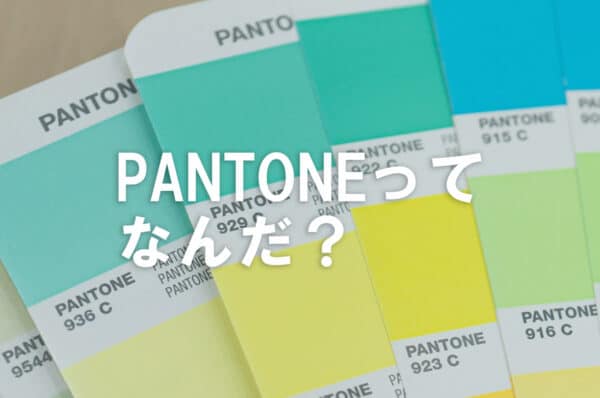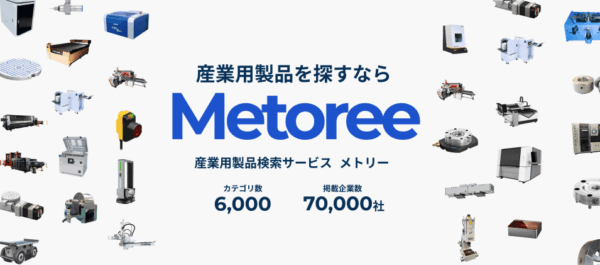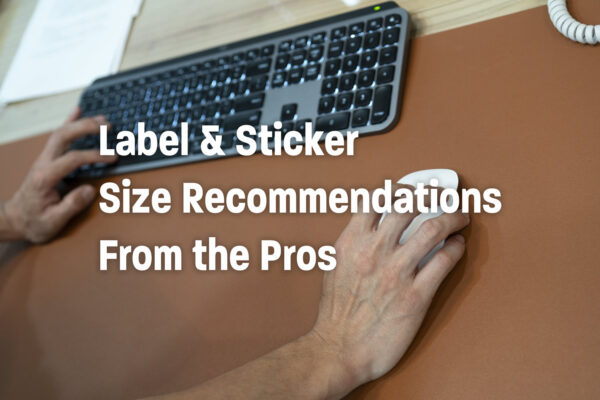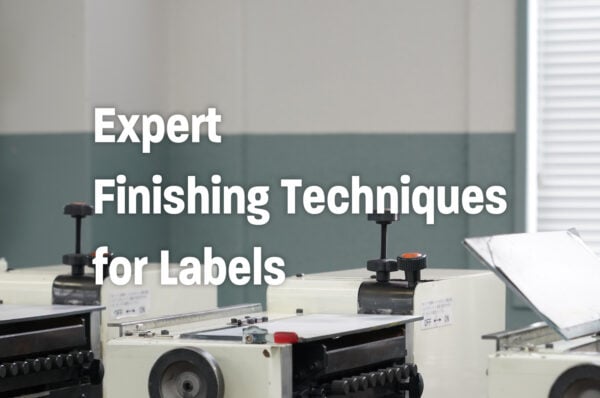Inkjet Printing: Differences, Pros, and Cons

Inkjet printing is a type of on-demand printing that involves directly spraying ink onto the material without using plates. It is widely used from home to office settings and can print on various materials such as photos, posters, T-shirts, and banners. However, there are multiple types of ink in inkjet printing, and their characteristics differ depending on the intended use and environment.
In this article, we will explain the overview of inkjet printing, its differences from other printing methods, and its advantages and disadvantages in an easy-to-understand manner. If you are interested in inkjet printing, please refer to this article.
As a specialized printing company for labels and seals, we handle various printing methods. If you have any questions about printing methods for creating product seals, please feel free to contact us from the link below.
Please feel free to contact us.
What is Inkjet Printing?
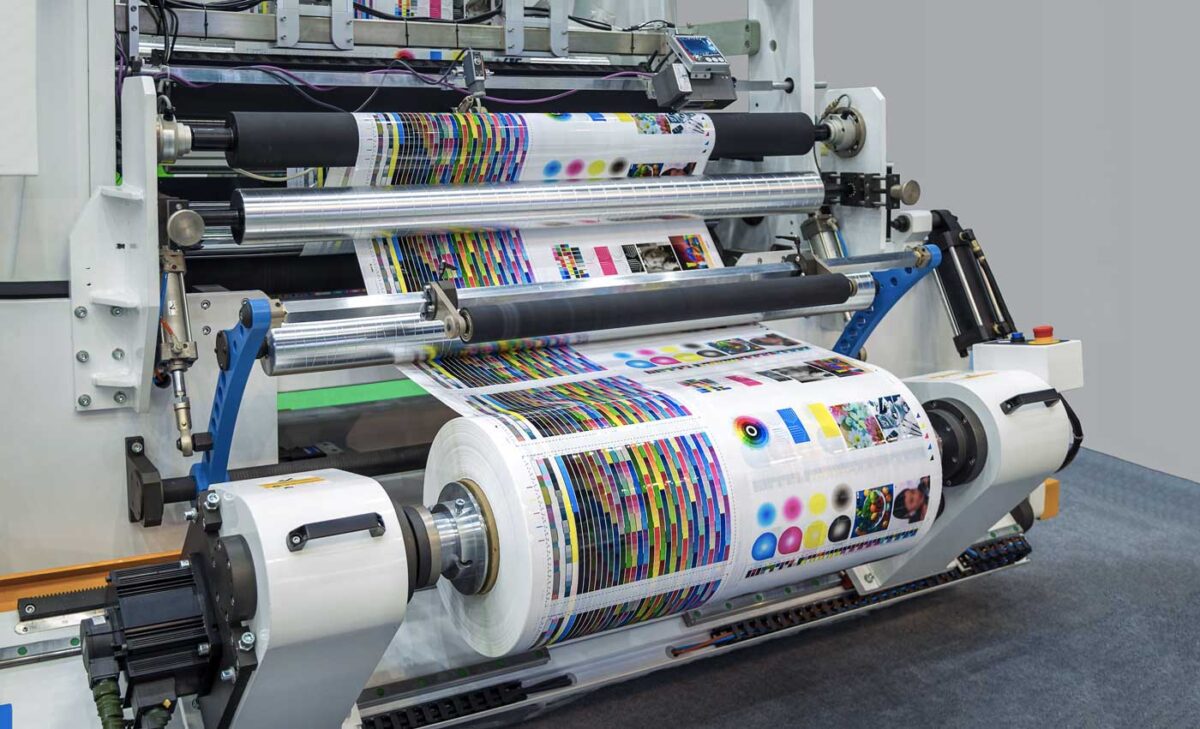
Inkjet printing is a method that uses digital data to spray ink directly onto the material. Since there are high-resolution machines available, it is used for printing photos and posters.
The mechanism involves applying pressure or heat to break down the ink into fine particles and spraying it like a mist from the nozzle directly onto the material. The narrow circumference of the nozzle allows for precise image creation in fine details.
Additionally, inkjet printing is a "plateless printing" method, meaning it can print even a single sheet. However, because it sprays ink from small holes without using plates, the printing speed is slow, making it unsuitable for mass production.
Below are the basic steps of the inkjet printing process.
- Check the design data to be printed on the computer.
- Fix the material in place using a jig so that it matches the position of the design data, and place the material in the inkjet printer.
- Send the data from the computer to the inkjet printer and print.
- Check the printed material to ensure it matches the design data, and complete the process.
Types of Ink Used in Inkjet Printing and Their Uses
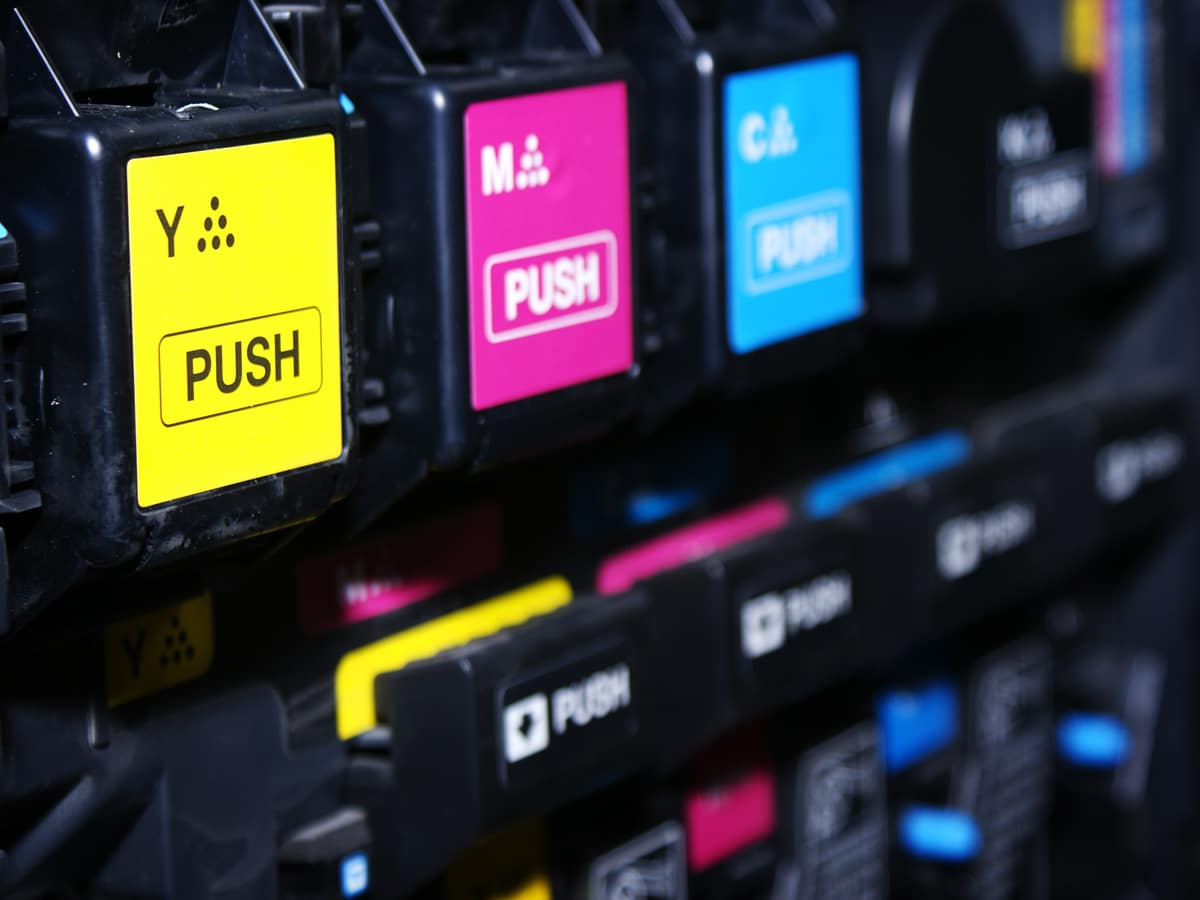
Inkjet printing primarily uses CMYK (cyan, magenta, yellow, black) inks. However, there are multiple types of ink, and selecting the appropriate ink depends on the intended use and finish.
- Water-based ink
- Solvent ink
- Latex ink
- UV ink
Here are the characteristics and uses of each type of ink.
Water-based Ink
Water-based ink is environmentally friendly because its main component is water. This type of ink is used in inkjet printers for general household use.
There are two types of water-based ink: "dye-based ink" and "pigment-based ink." Dye-based ink penetrates materials such as paper, and the color sets as the water evaporates. Its property of soaking into paper makes it suitable for photo printing due to its vibrant colors.
On the other hand, pigment-based ink stays on the surface of the paper, and the color sets by the ink particles remaining on the surface. It offers excellent color expression and high resistance to light and water, making it suitable for outdoor use and long-term displays.
- Dye-based ink: Suitable for photo printing and glossy paper
- Pigment-based ink: Suitable for outdoor posters and panels
Solvent Ink
Solvent ink is a type of ink that uses organic solvents. Solvent ink sets by the solvent drying after landing, making it strongly adhere to non-absorbent materials. Therefore, it can print on materials such as metal and plastic.
Additionally, the ink's vibrant and clear colors make it suitable for outdoor signs and banners.
【Suitable Products for Solvent Ink】
- Signs
- Advertisements
- Banners
- Hanging banners
- Tapestries
Latex Ink
Latex ink is water-based, has little odor, and is environmentally friendly. It sets strongly as the resin components harden with heat. Despite being water-based, it is resistant to smudging and has high weather resistance, allowing printing on various materials.
Its odorless and environmentally friendly nature makes it ideal for products used in environments such as food and beverage establishments.
【Suitable Products for Latex Ink】
- Outdoor signs
- Car wraps
- Tents
- Products requiring health considerations such as hospitals, food, and education
UV Ink
UV ink uses UV light (ultraviolet rays) to cure pigment ink and set it on the material. It has excellent quick-drying properties, allowing rapid production. UV ink can be used not only on paper but also on glass, resin, acrylic plates, metal, leather, and other materials that are thick or sensitive to heat.
Moreover, using white ink or clear ink in addition to full-color ink can enhance the vividness of colors. However, unprocessed UV ink can be harmful, so care must be taken when handling it.
【Suitable Products for UV Ink】
- Acrylic plates
- Norens (traditional Japanese curtains)
- Wood
Differences Between Inkjet Printing and Other Printing Methods
Here, we will introduce the differences between "inkjet printing," "offset printing," and "silk printing."
| Inkjet Printing | Offset Printing | Silk Printing | |
| Plates | Not required | Required | Required |
| Recommended Quantity | From 1 sheet | From 1000 sheets | From 100 sheets |
| Finish | Somewhat inferior | Clear even in details | Durable |
| Spot Color Printing | No | Yes | Yes |
| Main Products | Photos, posters, banners Food packages | Books, magazines, pamphlets | Paper, fabric, ceramics, glass |
Let's take a closer look at the characteristics of offset printing and silk printing methods below.
Offset Printing
Offset printing is a printing method that involves applying ink to a flat aluminum plate and transferring it. It is particularly suitable for mass printing and is used for a wide range of applications such as books, magazines, and posters.
Offset printing requires plate making, which incurs initial costs. Therefore, it is more expensive for small print runs, but the cost per sheet can be reduced through large-scale printing. The pigment oil-based inks and UV inks used in offset printing produce vibrant colors and can reproduce fine details, enabling high-quality printing.
For more details on offset printing, please refer to the following article.
Silk Printing
Silk printing, also known as screen printing, involves using a screen plate to directly apply ink onto the material. The ink is thickly applied to the material and then dried with heat to set the color. Due to the heat-setting process, the resulting print is highly durable.
This method is particularly recommended for clothing items such as sports uniforms and workwear that require frequent washing, as well as for a wide range of materials including paper, ceramics, glass, and signs.
For more details on silk printing, please refer to the following article.
What is Silk Printing? Explaining the Differences from Offset Printing and the Printing Process in 6 Steps
As a specialized printing company for seals, we handle a wide range of printing methods. If you have any concerns about printing seals or product labels, please feel free to contact us through the "Contact Us" link.
Advantages of Inkjet Printing
The advantages of inkjet printing are as follows:
- No plate making required, allowing for low-cost production even in small quantities
- Capable of printing in a wide range of sizes
- Expressive with rich colors
- Adaptable to various printing methods and materials
Advantage 1: No Plate Making Required, Low-Cost Production Even in Small Quantities
Since inkjet printing does not use plates, it can print directly from digital data. This allows for quick and easy printing.
Even with a small number of prints, it is cost-effective and efficient. Additionally, it can smoothly handle designs that include variable elements such as changing numbers or text for each sheet.
Advantage 2: Capable of Printing in a Wide Range of Sizes
Depending on the printer, inkjet printing can handle sizes from photo size up to large prints with a width of 5 meters and a length of 10 meters. This versatility allows for printing to be tailored to the specific needs of the project.
Advantage 3: Expressive with Rich Colors
Colors are created using the basic four colors of CMYK (cyan, magenta, yellow, black), allowing for a vibrant range of colors in designs. Additionally, gradients can be beautifully rendered, making inkjet printing ideal for photos and graphics.
Advantage 4: Adaptable to Various Printing Methods and Materials
Inkjet printing offers various types of inks such as water-based ink, solvent ink, and UV ink.
By selecting the appropriate ink and printer for the intended use, inkjet printing can meet various printing needs. Unlike offset printing, which uses plates, inkjet printing can flexibly accommodate design changes.
Disadvantages of Inkjet Printing
The main disadvantages of inkjet printing are the following three points:
- Not suitable for mass printing
- Cannot print special colors like fluorescent, gold, or silver
- Material color can affect the print if it is dark
Disadvantage 1: Not Suitable for Mass Printing
Inkjet printing involves spraying ink through small holes without using plates, which takes time for each print. Therefore, it is not suitable for mass printing of 500 or 1,000 copies, as the efficiency decreases.
If you need stable mass printing, it is recommended to consider other printing methods such as offset printing.
Disadvantage 2: Cannot Print Special Colors like Fluorescent, Gold, or Silver
Inkjet printing reproduces colors by mixing the four colors of CMYK. While some inkjet printers can use fluorescent ink or silver ink, they generally cannot reproduce special colors.
If you desire a design using special inks, inkjet printing may not be suitable, and other printing methods are recommended. Additionally, the color tone can vary depending on the printer and output timing in inkjet printing.
For more details on special colors, please refer to the following article.
What are Special Colors? Differences Between Four Color Process and Spot Colors
Disadvantage 3: Material Color Can Affect the Print if It Is Dark
If the material color is dark, such as black or navy, it can affect the color of the print in inkjet printing. To prioritize color reproducibility, choose white materials.
When printing on dark materials, a method is to create a white base layer first and then print the design on top of it. This white base layer helps to reduce the influence of the material color and achieve vivid colors. However, there is a risk of misalignment between the white base and the design, which can affect print quality.
As a specialized printing company for seals and labels, we offer various printing methods, including inkjet printing and offset printing. If you are unsure about the best printing method for your purpose or product, please feel free to contact us through the "Contact Us" link.
If You Want Easy Printing Without Using Plates, Inkjet Printing is Recommended
Inkjet printing does not require plate making and allows for easy printing from a single sheet. However, since it sprays ink through small holes without using plates, it takes a long time for mass printing. Therefore, understanding the characteristics of inkjet printing and choosing the best printing method based on the material, quantity, and purpose is crucial.
As a specialized printing company for seals, we offer a wide range of printing methods, including inkjet printing, offset printing, and silk printing. If you need help creating labels or seals for products, please feel free to contact us through the link below.
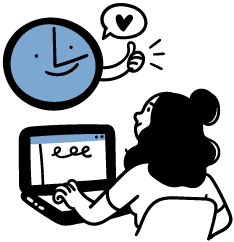
Start Your Project Now!
Contact Us or Get a Quote!



